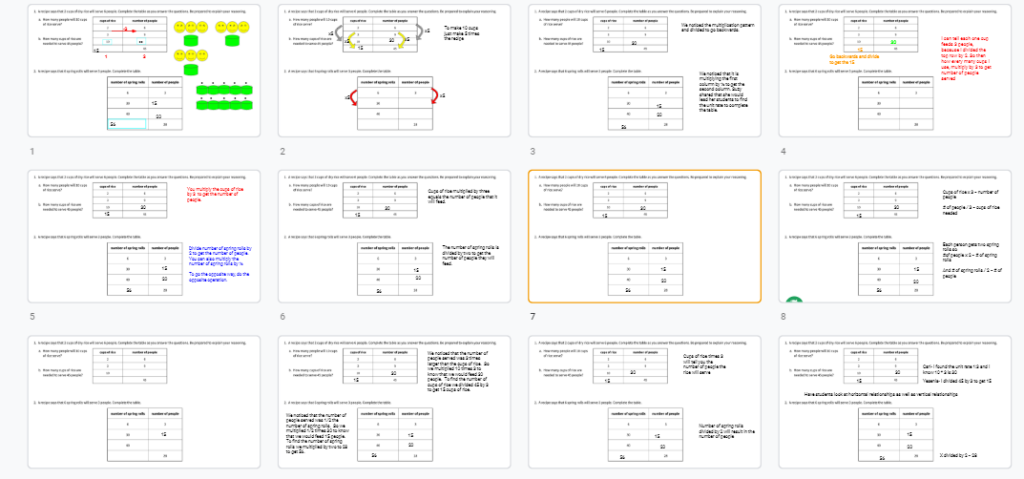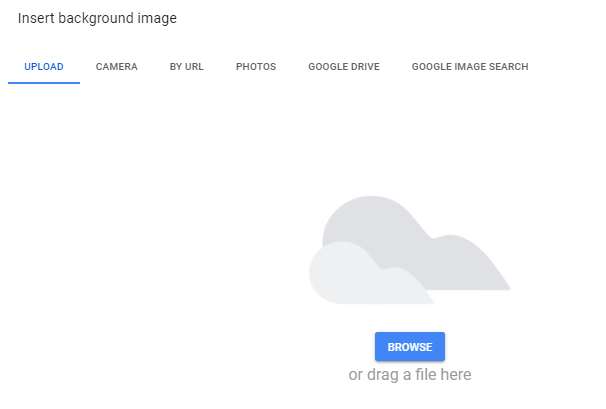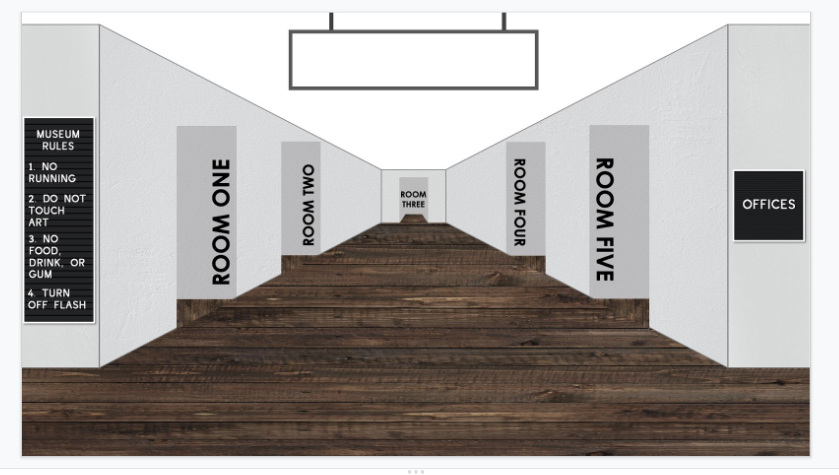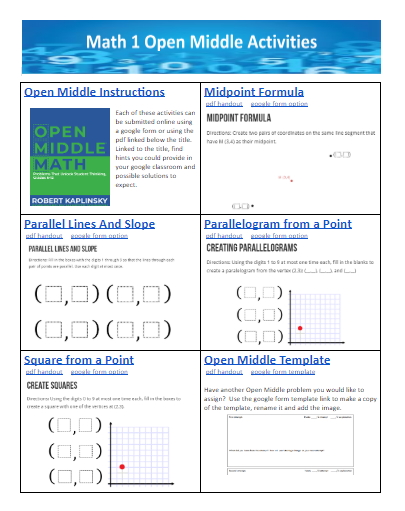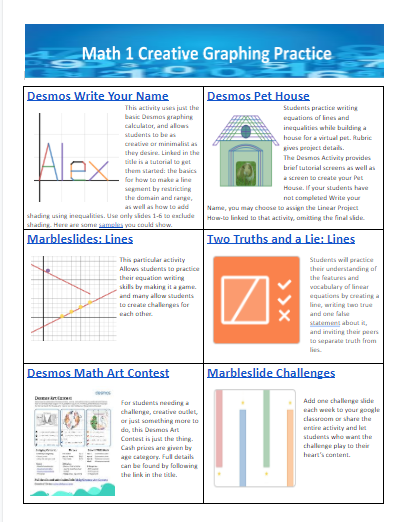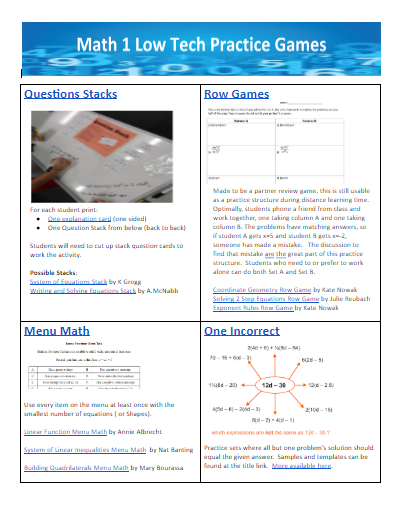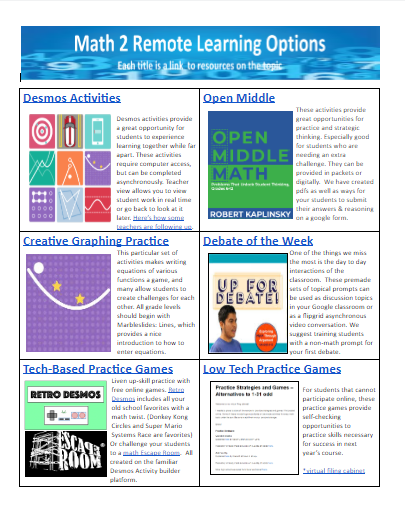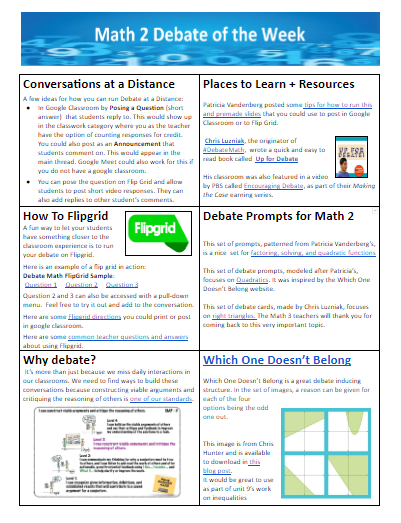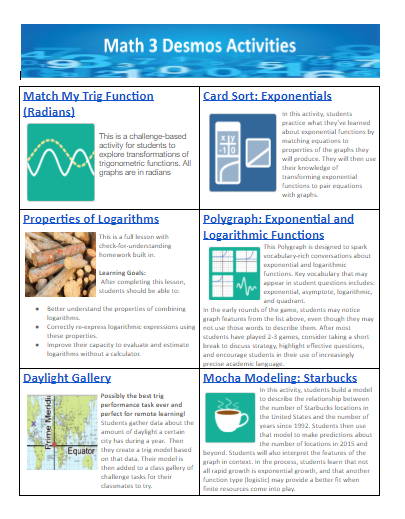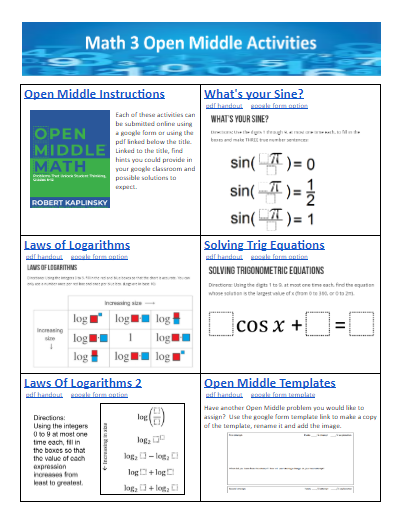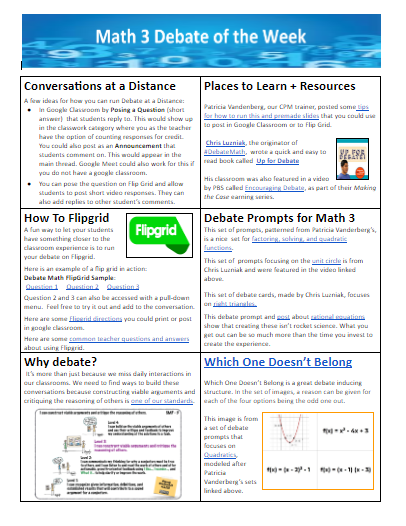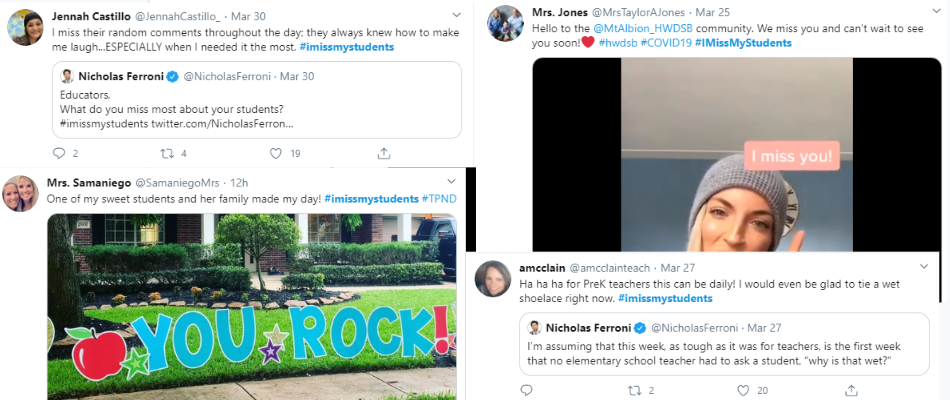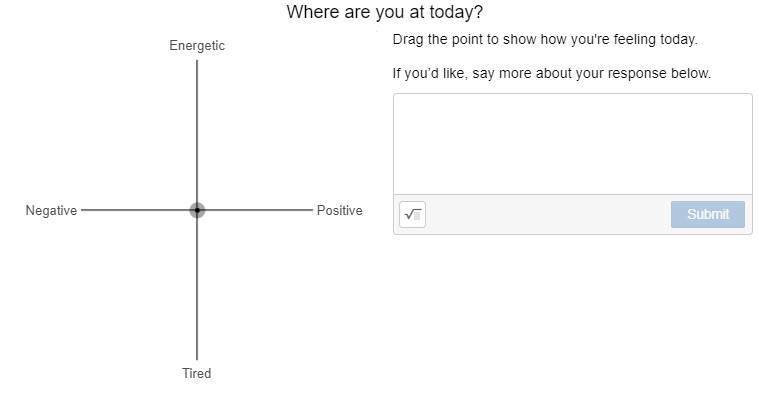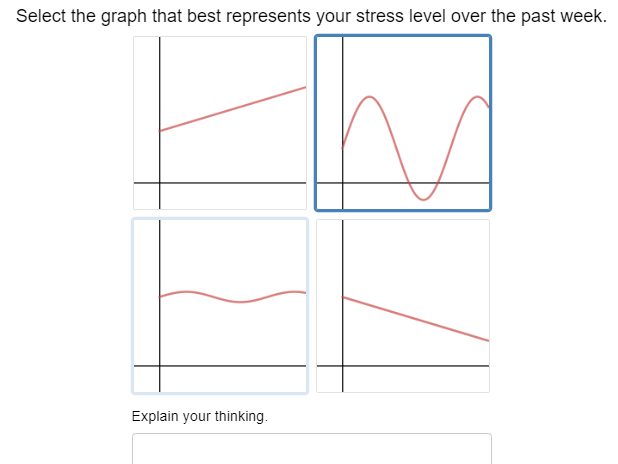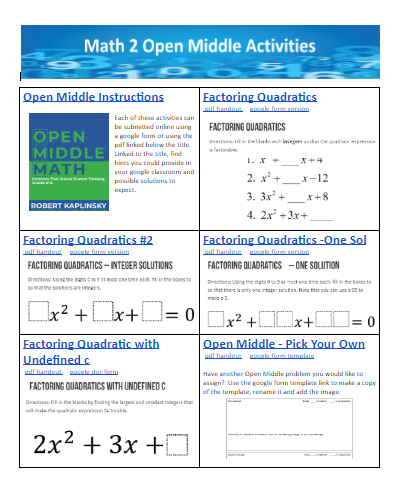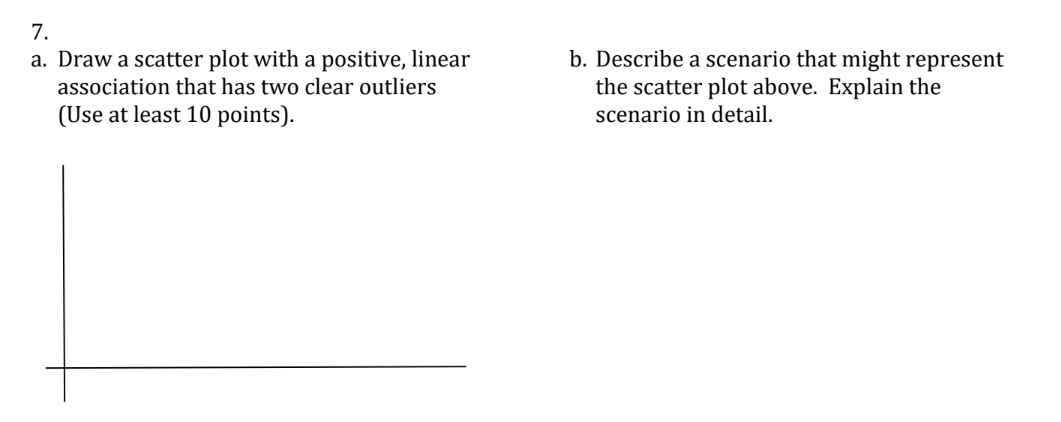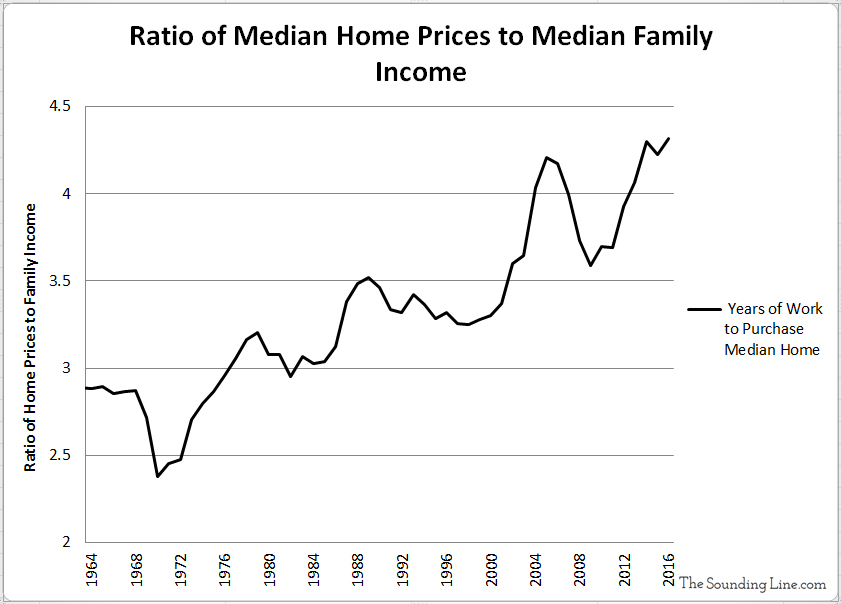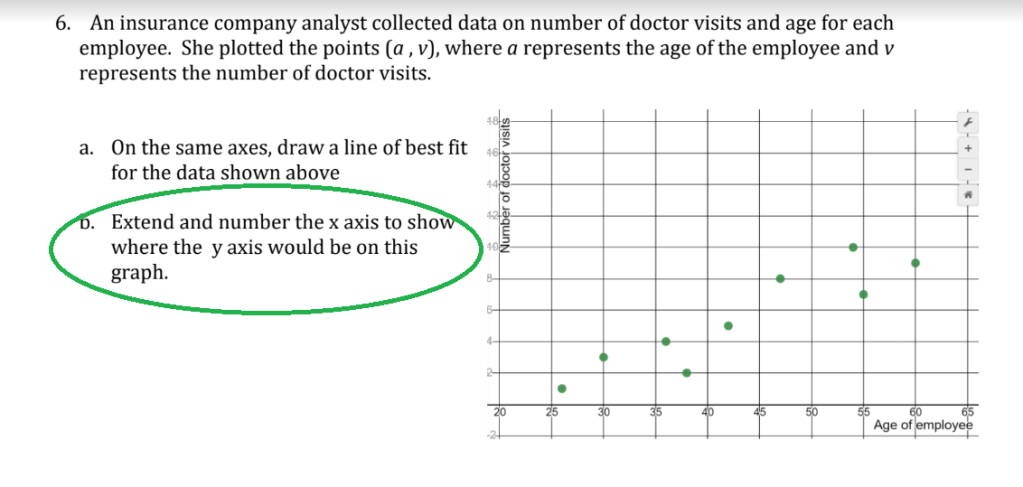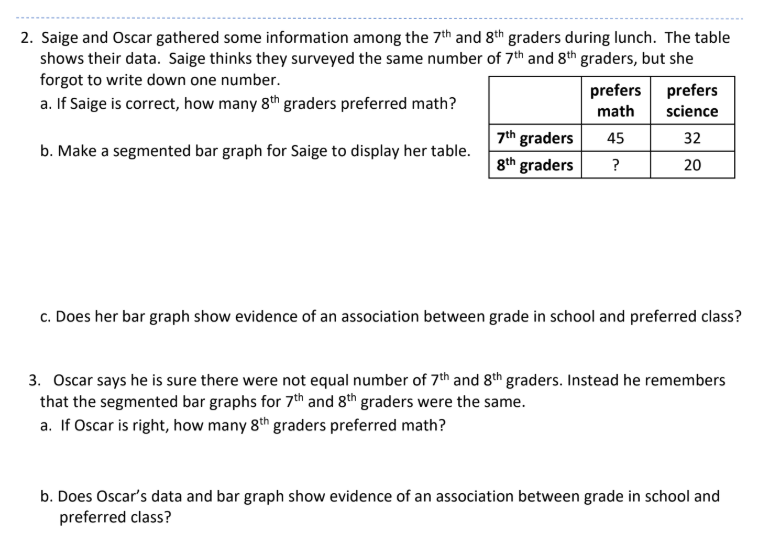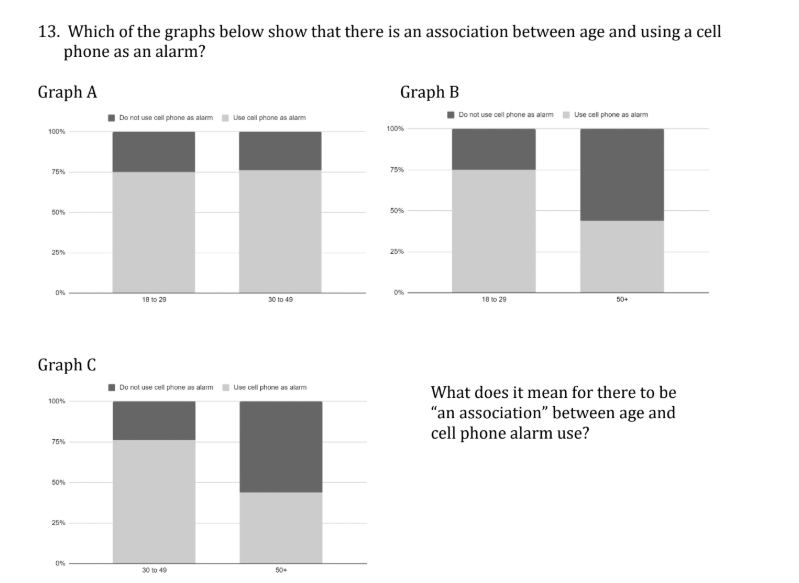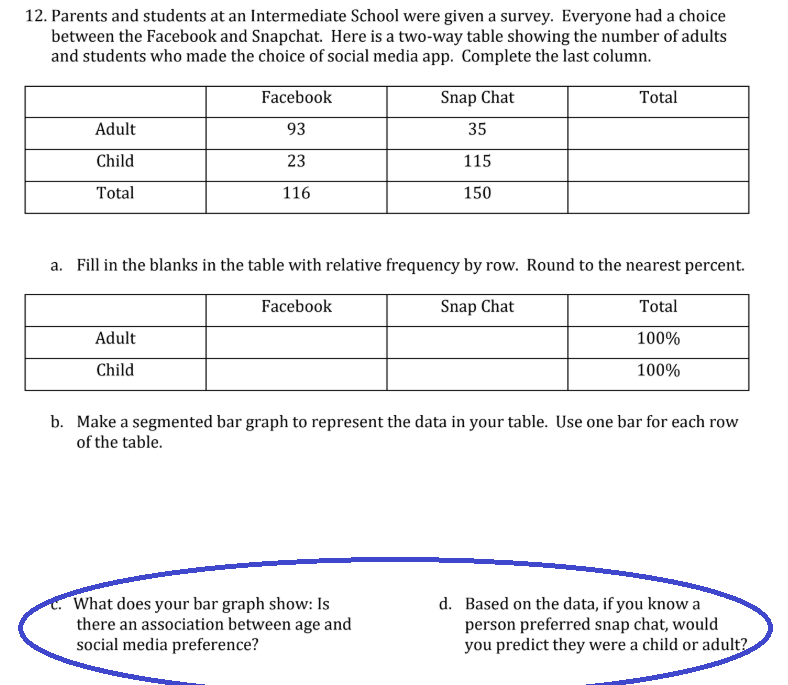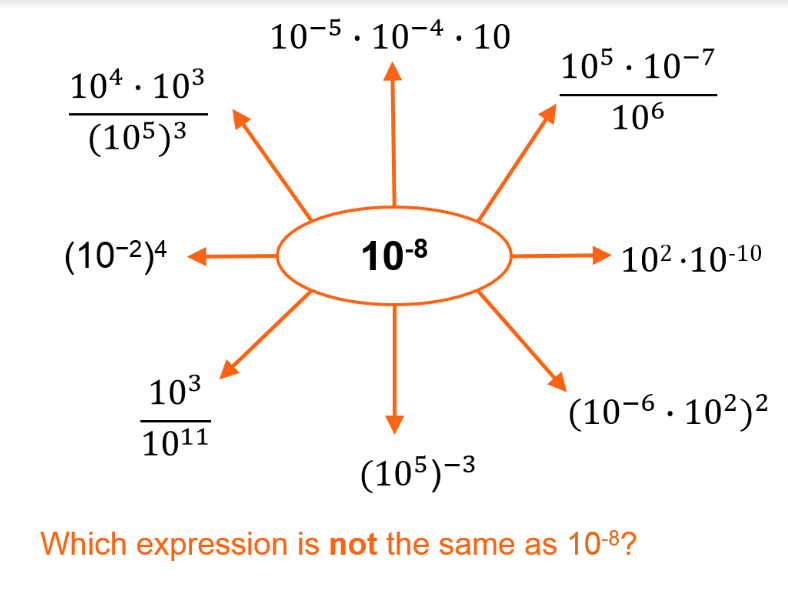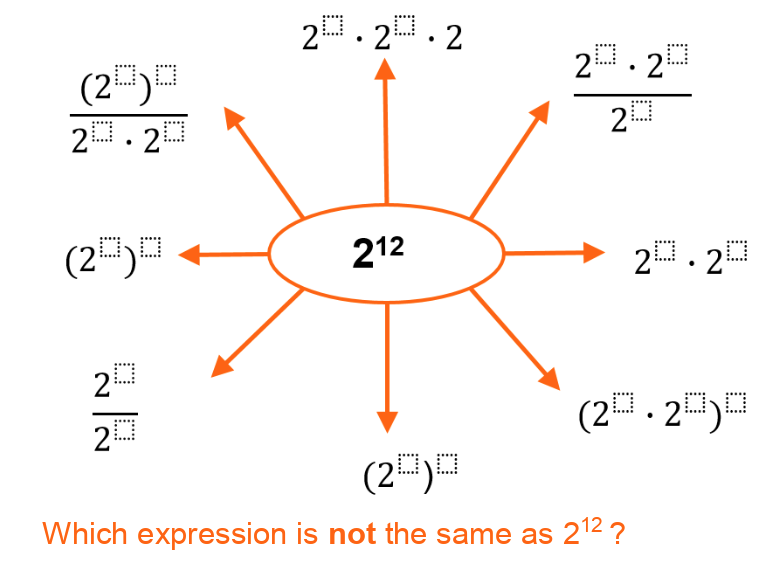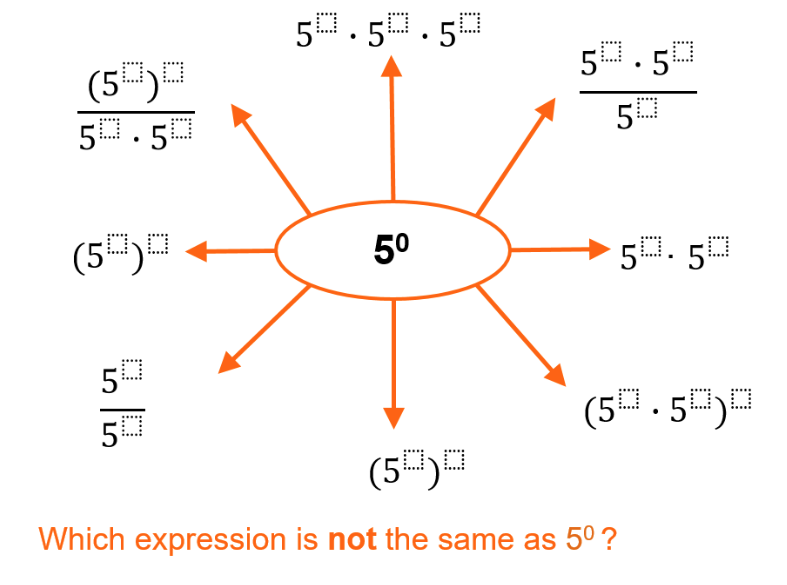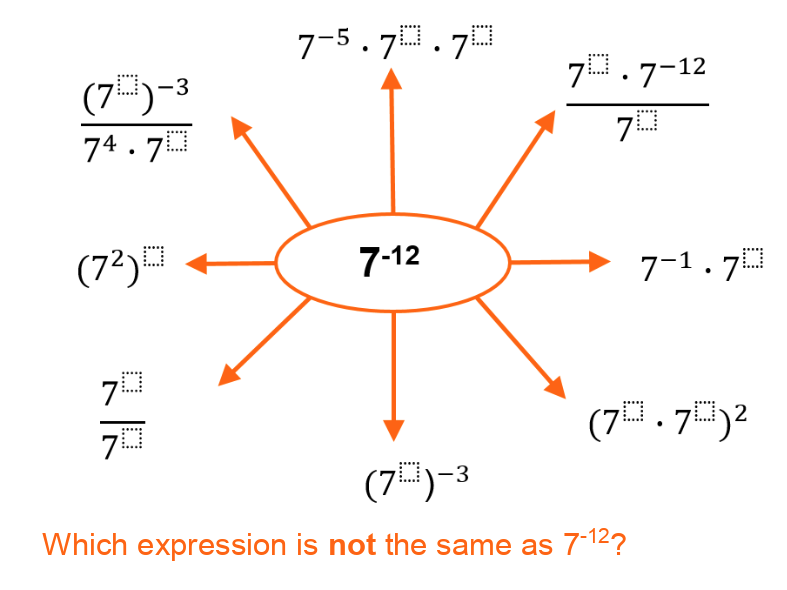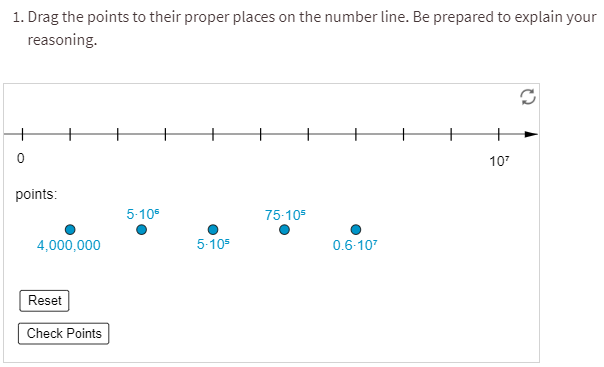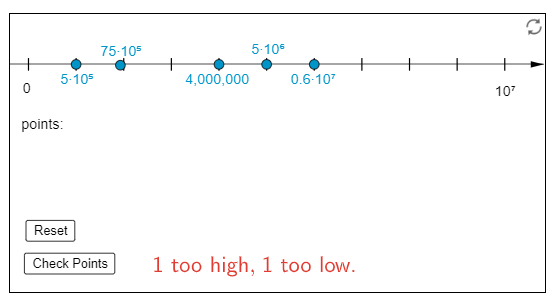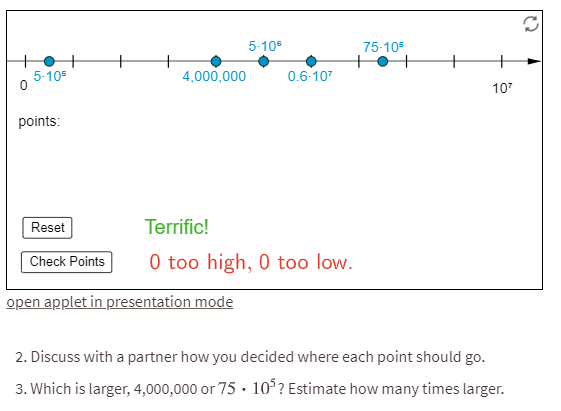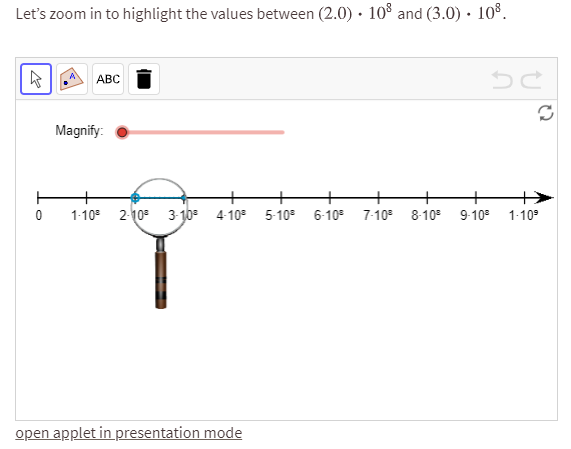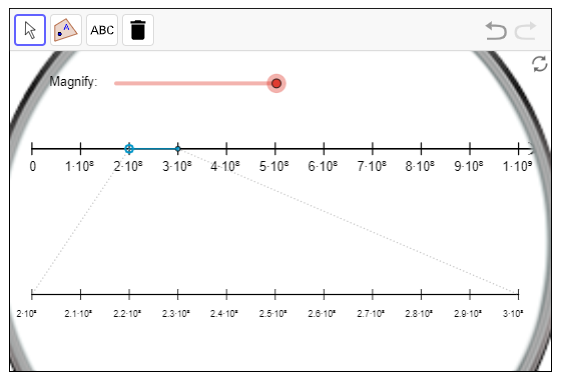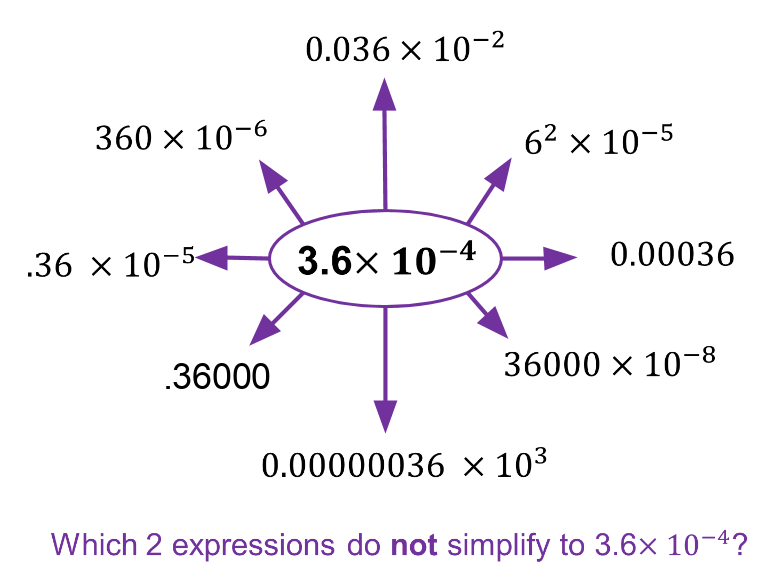This post serves as a place to record various starters I have used to assess previous learning that I want to draw on in that day’s lesson.
Similar vs congruent (from IM Grade 8 unit 2)
I was doing a demo lesson in a classroom I had not been in, and I needed to make sure they understood the mathematical terms similar and congruent. One of my favorite moves for this is a Stand and Talk because I don’t need to know if the one person who raises their hand knows it. I need everybody to know it. I like this better than “Tell your elbow partner…” because it increases the energy level in the room and gets all the wiggles out before we begin. So this was the stand and talk I used, and how it went:
Stand and Talk- “Partner A, explain to your partner what it means for two shapes to be congruent. Together find a sample of congruent things in the classroom.” Then, with the class still standing, I had pairs share objects they found. “Class, do you agree?”
“Partner B, explain what it means for two shapes to be similar. Together find a pair of similar things in the classroom.”
As I circulated and listened, I immediately realized they were not using the mathematical definition of similar with precision. For instance, I heard “an 89-degree angle is similar to a 90-degree angle”. I paused the class, pointed out an anchor poster on similarity. “In math, the definition of similar is more specific than how the word is normally used in English.” I asked them to revise their answers to this level of specificity. As I circulated I heard most groups now using the correct definition, and thinking more strenuously about their examples around the room. To conclude, with the class still standing, I had pairs share objects they found. “Class, do you agree?” As we moved from example to example I emphasized “same exact shape” and “different sized”. This whole class opener took less than 10 minutes.
As students returned to their seats, one student raised their hand and asked, “Are they allowed to be the same size? So can congruent things count as similar also?” I asked the class what they thought about this. After a few students shared their thoughts I asked, “If we let congruent things count as similar, what would the scale factor be?” Since this comes up on the unit test, I was very happy to correct my overgeneralization.
Plotting points (from IM Grade 8 Unit 3)
As I began Unit 3 in my 8th-grade summer school class, I knew that being able to correctly plot points was going to be essential to success. The readiness Check had showed me this was going to be an issue for many of my students. So before class, I put blue painter’s tape down on the floor to create axes, and put 3 by 5 cards with the point that named their location on a few desks. As students begin to arrive I let in 3 students at a time, telling them they got to pick their seat but had to name it correctly with its point label before they could be seated. When they gave me an ordered pair, I pointed out where that seat would be located. If that was not where they intended, they could go to the back of the line and try again. In about 8 minutes, everyone was in the room and seated, and I was pretty confident they knew how to name a point on that particular axes. I checked by asking them to discuss with their partner the point name for an empty desk near the front. Since the lesson was going to contain many opportunities to plot points on paper and on whiteboards, we began our first lesson without further discussion.
Quadrilateral names (from IM Grade 8 unit 2)
The lesson of the day was going to discuss similarity in various quadrilaterals, using correct mathematical names for these shapes. Since these names had not come up yet this year, I was uncertain whether words like parallelogram and rhombus would be meaningful to the students in front of me that day. In the five minutes before class began, the teacher and I rummaged the room for any solid of consistent length. We found a bin of base ten blocks and pulled out all the rods. When students came in, they found 6 rods sitting on their desk.
“Use the rods in front of you to build a parallelogram”
“Can you build a different parallelogram? You can work with your elbow partner if you need more rods.”
(continued on with rectangle, rhombus, square.)
One of my favorite surprise moments was when a couple pairs of students built a hexagon when I asked for a different parallelogram.
Tell me more about why this might count as a parallelogram.
Well, opposite pairs of sides are parallel…
This whole activity offered so many chances to clarify and tie up some unfinished learning. And because the lesson immediately applied these definitions, no extra day of review practice was needed.
Unit Circle values (from Math 3 trig unit)
This day I was modeling a desmos lesson in a Math 3 classroom. The class had already learned about finding trig values using the unit circle, but as we begin the lesson, I could see it was definitely not a skill they felt confident with yet. The first period I launched into a quick mini-lecture, which managed both to bore everyone and also not really accomplish what I intended. For the second period, I tried a Stand and Talk instead, and it was magical. Read more about this opener here.
Day two of a unit in math 3 (from Math 3 conics unit)
This block day I was modeling a complex activity-based lesson on deriving the formula for a parabola from the formal definition involving focus and directrix. I had four teachers observing the lesson and only one of the adults in the room really knew the students. The first day of the unit had been a traditional coverage of the equation of a circle. To gain a little insight into the students in front of me, I prepared a 3-2-1 homework review sheet and handed it out as they came in.
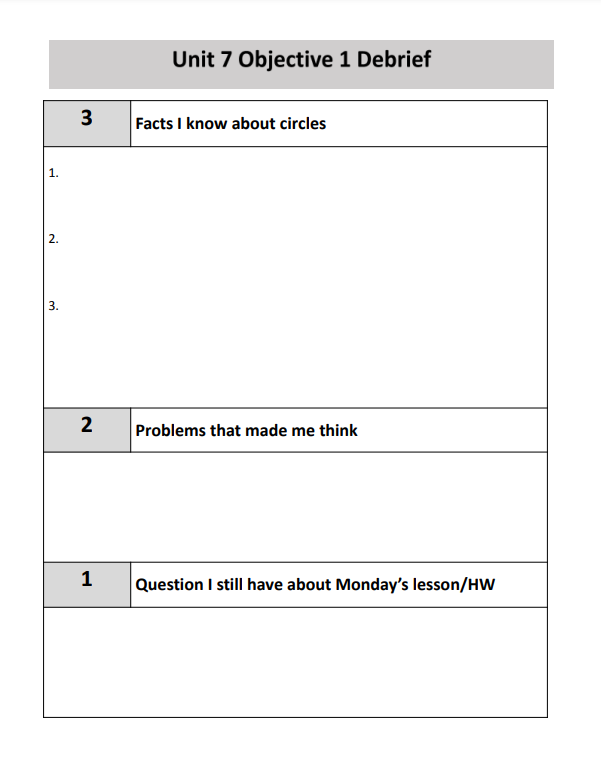
After a few minutes of quiet writing, I begin scribing a list of everything they knew about circles. Tons of vocabulary came out and I had them explain it all, or tell me what to draw to illustrate it. The formula they learned the previous day came up, but so did area and circumference formulas and just about anything I might have wanted to “fill in” for students who were struggling with unfinished learnings.
Next I asked for students to share problems that really made them think, but they eventually figured it out. A sample conversation:
#13
What was weird about #13?
They gave you a diameter.
And you didn’t want a diameter?
No. I wanted a radius.
Ahh. yeah, So what did you figure out?
I figured out that if I divide the diameter in half I will have the length of the radius.
Oh, great thinking! Did anyone else notice that tricky spot?
When we got to “One question you still have”, the only question remaining was deeper than the norm. “I don’t understand how circle equations relate to the conics intro video we watched yesterday.” Perfect! since I hadn’t seen or even known there was a video, I let their teacher take that one. Perfect intro to our work that day, and I have gotten a great peek at their thinking and things I might connect to during the lesson.


